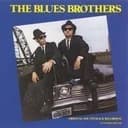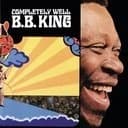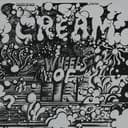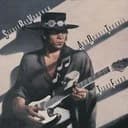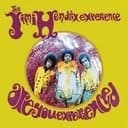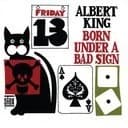The D♭ Blues Scale occupies a unique position in the blues and jazz spectrum as a preferred key for wind instruments, particularly saxophones and trumpets that naturally favor flat keys. The enharmonic equivalence to C♯ Blues means these scales are identical in sound but serve different practical purposes—D♭ is typically chosen in ensemble settings where horn players dominate, while C♯ appears more commonly in sharp-key guitar contexts. The blue note (G natural) creates a tritone relationship with the root D♭, generating the characteristic tension that blues musicians exploit through pitch bending and microtonal inflections. This interval, historically called "diabolus in musica" (the devil in music) by medieval theorists, became the emotional heart of blues expression when African-American musicians incorporated African pitch concepts into European harmonic frameworks. The scale's structure (D♭-F♭-G♭-G-A♭-C♭) features both minor tonality through the ♭3 (F♭/E) and dominant seventh implications through the ♭7 (C♭/B), making it remarkably versatile across blues, jazz, soul, and funk idioms.
Playing Blues in D♭
The D♭ Blues Scale excels in jazz and R&B contexts where flat keys dominate the harmonic landscape, particularly in horn section arrangements and keyboard-driven compositions. When improvising over a 12-bar blues in D♭ (D♭7-G♭7-D♭7-A♭7-G♭7-D♭7), the blues scale provides all the essential melodic material needed to navigate the chord changes without requiring mode switching or complex note selection. The blue note (G natural) serves as the focal point for expressive techniques—bend into it from G♭, slide down to it from A♭, or use it as a chromatic passing tone between G♭ and A♭ to create authentic blues vocabulary. Jazz pianists particularly appreciate D♭ blues for its comfortable hand positions on black keys, allowing fluid execution of blues runs and tremolo effects. Combine the blues scale with the D♭ Minor Pentatonic as your foundational palette, adding the blue note for emphasis on important rhythmic moments. The scale also functions effectively over D♭7 chord vamps in funk and soul music, where the ambiguity between minor thirds (F♭/E) and dominant seventh harmony creates the perfect balance of consonance and edge.
D♭ Blues vs C♯ Blues: Understanding Enharmonic Equivalence
While D♭ Blues and C♯ Blues produce identical pitches on any instrument, the choice between them reflects practical considerations in ensemble playing and music notation. D♭ Blues (D♭-F♭-G♭-G-A♭-C♭) uses five flats in its key signature and appears more naturally in jazz lead sheets, big band arrangements, and songs written for horn sections. C♯ Blues (C♯-E-F♯-G-G♯-B) requires seven sharps (the relative key signature) but appears more commonly in rock and blues guitar music where sharp keys feel more intuitive on the fretboard. Professional musicians working in both flat and sharp key environments benefit from learning both notational approaches, though the sound and fingering patterns remain identical. Jazz standards like "Giant Steps" and "Countdown" by John Coltrane navigate through D♭ tonality extensively, making familiarity with this notation essential for jazz musicians. Guitarists often mentally transpose to C♯ for easier reading, while horn players and pianists generally prefer the flat-key notation. Understanding this enharmonic relationship helps you communicate effectively with different instrumentalists and read charts in diverse musical contexts.
Chord Progressions in D♭ Blues
The D♭ Blues Scale navigates effortlessly over standard blues progressions in D♭, where the I-IV-V relationship (D♭7-G♭7-A♭7) provides the harmonic foundation for improvisation and composition. The classic 12-bar blues form in D♭ follows: D♭7 (4 bars) - G♭7 (2 bars) - D♭7 (2 bars) - A♭7 (1 bar) - G♭7 (1 bar) - D♭7 (2 bars). Every note in the blues scale relates harmonically to all three dominant seventh chords, creating a stable improvisational framework that works throughout the progression. Jazz musicians often extend these basic changes with chromatic substitutions and turnarounds, but the blues scale remains effective even over sophisticated reharmonizations. The scale also functions over simpler forms like one-chord D♭7 or D♭m7 vamps common in funk and soul music, where the rhythmic groove takes precedence over harmonic movement. When practicing, emphasize the chord tones (D♭, F♭/E, A♭, C♭/B) on downbeats while using the blue note (G) as an upbeat or syncopated accent to create melodic lines that lock into the harmonic rhythm. This approach to blues scale application translates directly to professional performance situations in jazz clubs, recording sessions, and live funk/soul ensembles.
Historical Context and Modern Applications
The blues scale in flat keys like D♭ became prominent in the transition from rural Delta blues to urban Chicago and Kansas City blues styles, where piano players and horn sections required practical key signatures for ensemble performance. Duke Ellington, Count Basie, and other big band leaders frequently arranged blues compositions in D♭ and other flat keys to accommodate their brass sections, establishing this key as a jazz standard. Later, organ trios and soul jazz groups continued this tradition, with artists like Jimmy Smith and Dr. Lonnie Smith creating blues-based improvisations in D♭ over Hammond B-3 organ. Contemporary jazz artists including Robert Glasper and Christian Scott have evolved the blues scale vocabulary in D♭, incorporating hip-hop influences and extended harmony while maintaining the essential blues feeling. In R&B and neo-soul, producers and arrangers frequently work in D♭ for its rich harmonic qualities and compatibility with vocal ranges. Learning the D♭ Blues Scale connects you to this sophisticated tradition while providing practical tools for modern genres that blend blues, jazz, funk, and electronic music production. The scale's simplicity belies its expressive potential—master the basics, then explore the nuanced pitch bending and rhythmic variations that transform six notes into endless melodic possibilities.
